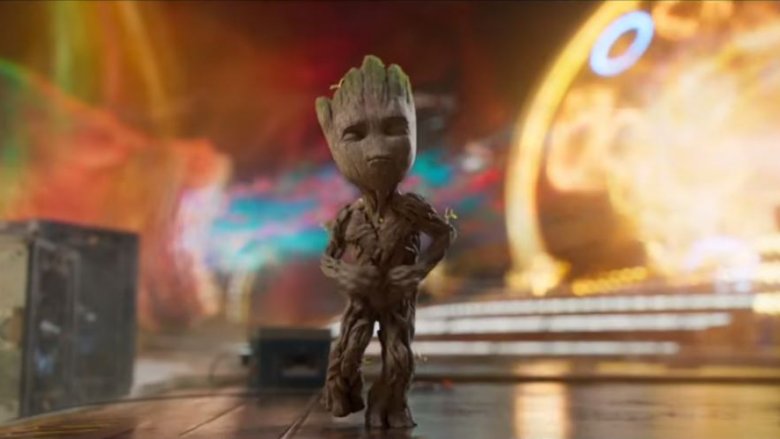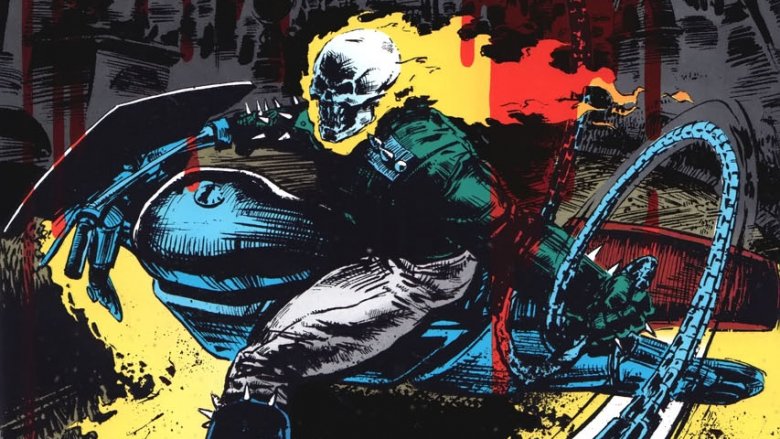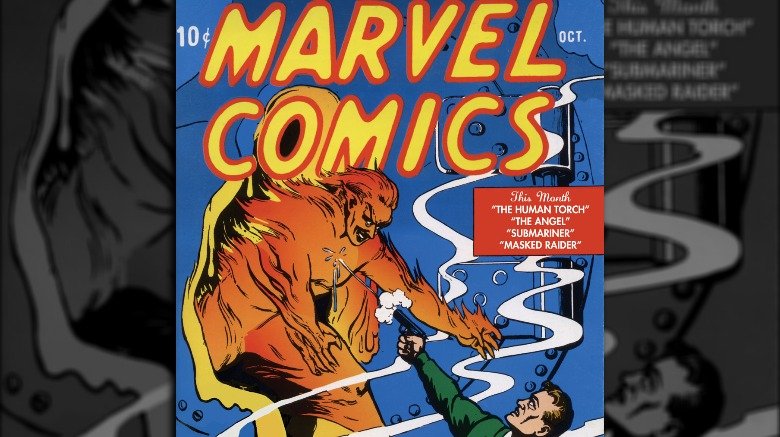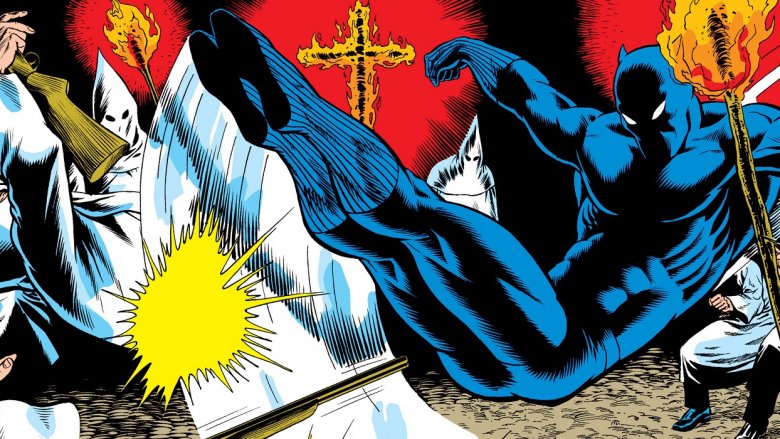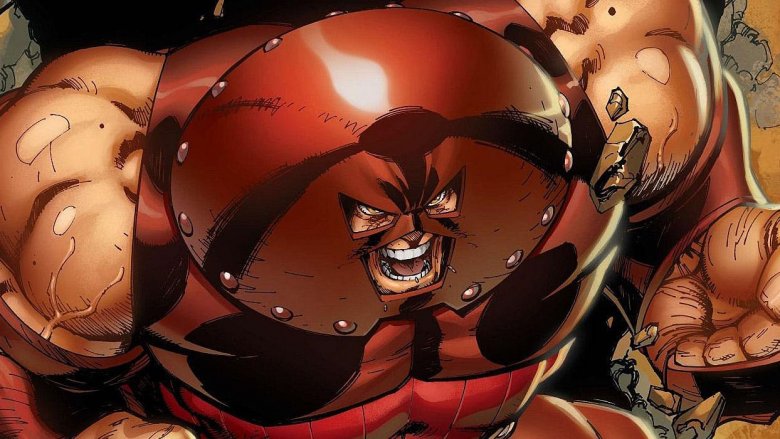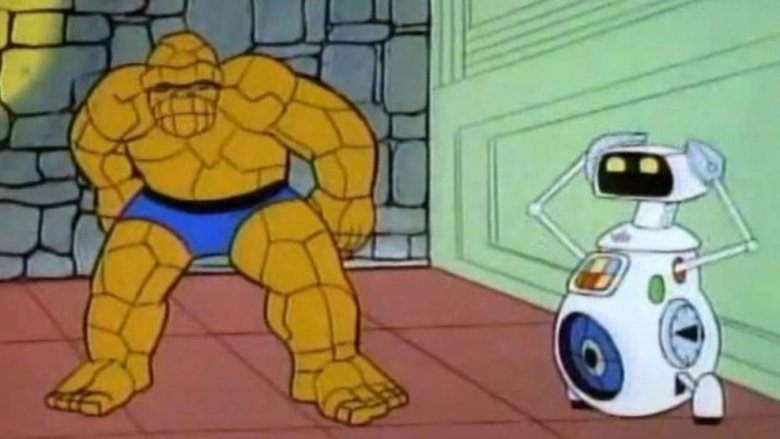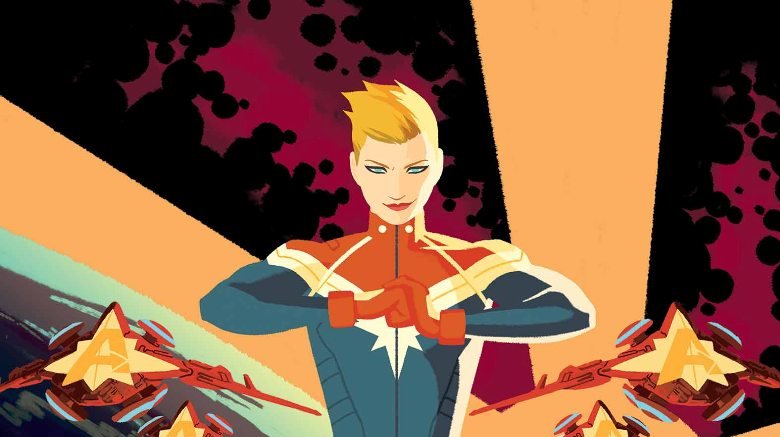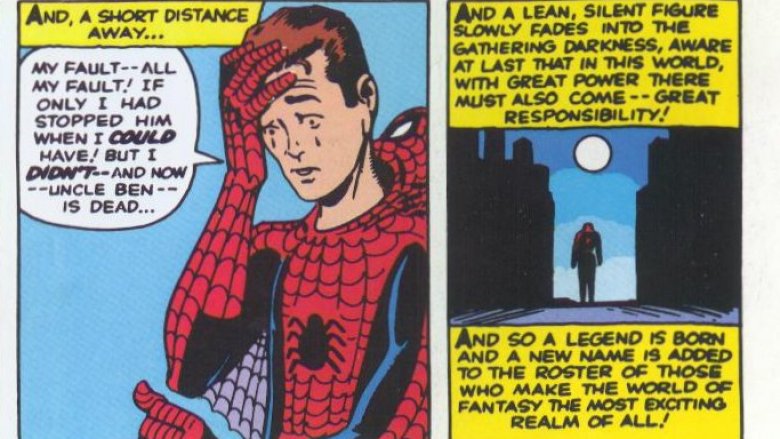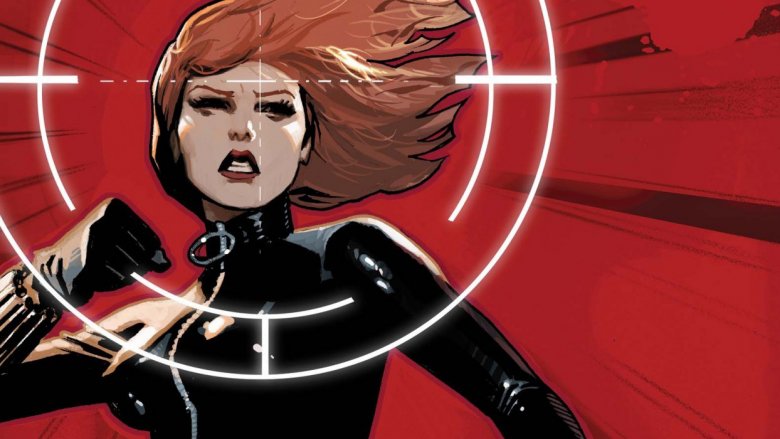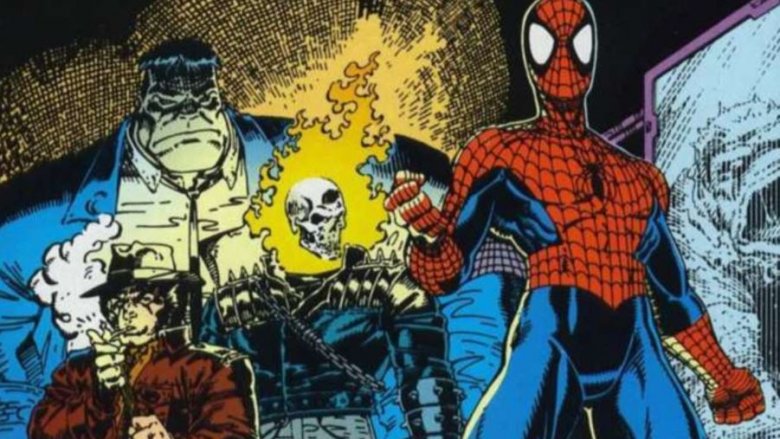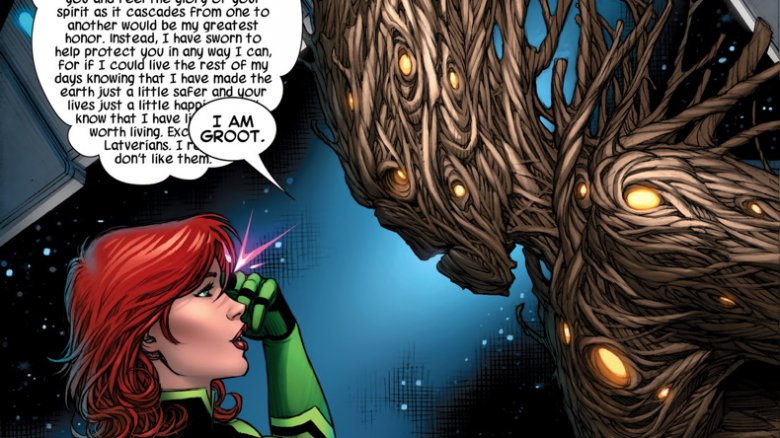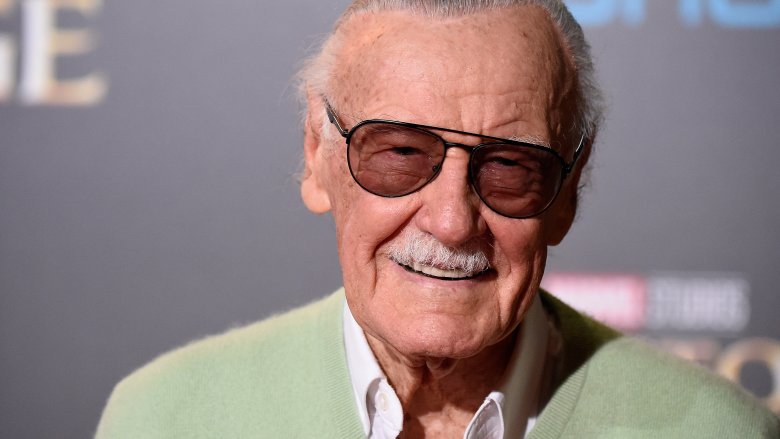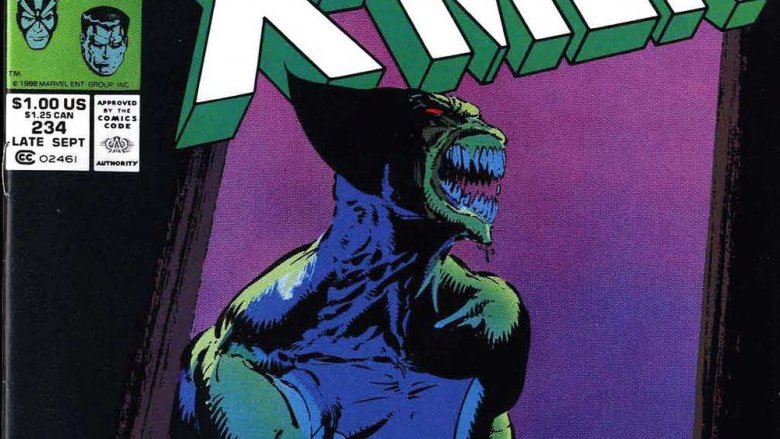False Facts About Marvel You Always Thought Were True
Characters like Spider-Man, Hulk, and the X-Men have been household names for decades, but since the Marvel Cinematic Universe came into the picture, the world's population of "True Believers" has grown exponentially, to the point where everyone from your grandparents to your nieces and nephews can probably tell you the origin stories behind dozens of formerly obscure comic book characters, from Spider-Ham to Ego the Living Planet. It's definitely a great era to be a superhero fan: arguably, the best ever.
That said, as with any media property that goes from cult hit to worldwide sensation, the world is now populated with various myths, falsehoods, and understandable misinterpretations regarding everyone's favorite superhero universe. Some of these misunderstandings just come down to the fact that newer Marvel fans haven't necessarily met some characters yet, but there are other ones that even the most hardcore comic fans have recited for a long time.
Ghost Rider is a ghost
Yes, yes, the dude's name is "Ghost" Rider, and considering that he's a stunt motorcyclist who transforms into a flaming skeleton, it's very easy to see where this misconception comes from. In reality, though, Johnny Blaze would probably be seriously relieved if his other half was just an innocent ghost. Why? Because the problematic creature he actually shares a body with is a whole lot meaner.
The world's most popular flaming skeleton, as the Marvel Directory explains, is an honest-to-Odin demon named Zarathos, bonded to Blaze (and other poor individuals, later in the story) when he makes a deal with Marvel's version of the Devil, who calls himself Mephisto. This situation is deeply unfortunate for Blaze because Zarathos is one evil SOB, and equally unfortunate for Zarathos, who would much rather be enslaving the human race or slaughtering innocents, instead of following Blaze's somewhat less-than-sadistic marching orders. So while Bruce Banner might think he has it rough, at least the Hulk is a decent, kind soul with an unfortunate temper, unlike this grinning lunatic from Hell.
Human Torch debuted with the Fantastic Four
That punk kid Johnny Storm gets all the credit, but he's actually the second superhero to call himself the Human Torch. Decades before Johnny was shouting "Flame on!" the original version of the character premiered all the way back in 1939, on the cover of Marvel Comics #1, and he was arguably the publisher's first breakout superhero. But while this Torch flew around and threw fireballs with the best of 'em, his powers had nothing to do with cosmic rays. He was an android, invented by Dr. Phineas T. Horton, who accidentally gains sentience, causes some nasty destruction, and then vows to save humanity from jerks like Namor, the Sub-Mariner. This Torch teamed up with Captain America a lot and played a key role in Marvel's version of World War II.
Though we'll probably never see the android Torch spark a flame on the big screen, he does exist in the MCU. Don't believe it? Cue up Captain America: The First Avenger, and notice how one of the displays at the World's Fair is a "Synthetic Man" in a familiar red costume.
Jack Kirby had Black Panther fight the KKK to protest his racist editors
Ever since Black Panther became the world's new favorite superhero, there's been a meme floating around social media proclaiming that back when T'Challa's co-creator Jack Kirby was first working on the character, his editors told him that the comic didn't have enough white people in it. Allegedly, Kirby responded by pitting the hero against the KKK in the very next issue. It's a cool story, and certainly believable. In real life, American Nazis once stormed the Marvel offices, and Kirby (a Jewish World War II veteran) famously rolled up his sleeves for a fight, according to Paste Magazine.
But while Kirby certainly was an awesome dude, and Black Panther certainly did tear his claws through some racist white hoods in Jungle Action #19 — a pretty bold story at the time — the meme messes up the details. For one, the issue in question didn't hit the stands until 1976, over a decade after T'Challa's creation. Two, the writer wasn't Kirby, but the lesser-known Don McGregor. According to Comic Book Resources, McGregor admits that the meme's disregard for the facts does sting a bit, but he's still extremely proud of the story he wrote all those years ago.
The X-Men are all mutants
To be fair, of the hundreds of superheroes who have worn an X on their belt, the vast majority have been mutants. However, there's absolutely no requirement that one has to be part of an oppressed minority to join the fight for that minority group's equal rights, superpowers or not, and some rather notable X-Men got their powers from crazy scientific accidents rather than genetics.
For example, did you know that Spider-Man has taught classes at the X-Mansion? There's also the unstoppable Juggernaut, as Comic Book Resources points out, who once did a redemptive tour with the X-Men, even though his Hulk-level strength comes from a magical ruby. Other non-mutants who've proudly brandished their X-badges include Fantomex, a humanoid Sentinel robot, an alien bodyguard named Warbird, a cute little dragon ... and Deathlok, that crazy-cool cyborg from a dystopian future. Also, don't forget that the ever-popular Deadpool isn't technically a mutant, either, even if he can regrow his limbs from nothing: As PopSugar points out, Deadpool only got superpowers due to some shady Weapon X experimentation, which was advertised to him as a cancer cure.
The Human Torch was replaced by a cutesy robot because TV networks were afraid kids would light themselves on fire
If you haven't heard of H.E.R.B.I.E. the robot, that's okay. Here's a primer: Back in the 1970s, a cartoon show called The New Fantastic Four featured classic storylines and characters, except the Human Torch was replaced by an adorable robot sidekick who didn't get along with the Thing. If you're wondering what drunk TV executive had the genius idea of cutting the team's most popular character, well, the common story is that the network was scared that Johnny Storm's powers might encourage kids to light themselves on fire. Dumb reason? Sure, but definitely believable.
Well, it's bogus. According to Birth Movies Death, the far more mundane truth is that, at the time, Marvel had auctioned off the TV and movie rights to their big characters all over the place. Apparently some genius decided to sell the Torch separately from the Fantastic Four, meaning that when NBC made the cartoon, they had to improvise ... so, they created a robot. Chuckle all you want, but this little R2-D2-looking fella ended up getting introduced into the comics, so really, it seems H.E.R.B.I.E. had the last laugh.
Captain Marvel was originally a Marvel character
Buckle up, True Believers, and get ready for a fun story about copyrights, legal disputes, and other legalese!
Calm down, it's not as painful as it sounds. As Gizmodo explains, the Captain Marvel name dispute goes all goes back to the early days of comics, when (now-defunct) publisher Fawcett Comics owned a popular superhero named Captain Marvel, a boy named Billy Batson who says the word "Shazam!" and becomes an adult superhero. Well, Fawcett got in a lot of legal battles with DC Comics (then called "National Comics") over accusations that Captain Marvel was a Superman ripoff, so the character went kaput in the 1950s.
The following decade, Marvel Comics took off, and they soon realized the perks of having a hero named Captain Marvel. So, they created the Kree superhero Mar-Vell (a man in the comics, but played by Annette Bening in the 2019 film). Fast-forward to the 1970s, and DC Comics (who now owns the Fawcett characters) brought back the original Billy Batson hero ... but since Marvel had copyrighted the name, DC could only market their Batson comics, TV shows, or cartoons as "Shazam!," and long story short, 40 years of Shazam marketing led to everyone thinking the hero's name was Shazam. In the 2010s, DC finally just renamed their hero Shazam, while Marvel officially settled on Carol Danvers as Captain Marvel.
Phew. Keeping up? Basically, Billy is now Shazam, Carol is Captain Marvel, and everybody is (hopefully) satisfied.
Spider-Man's mantra was first said by Uncle Ben
There might be no phrase in comic book history as iconic as "With great power comes great responsibility," the parting lesson that Ben Parker left his soon-to-be-guilt-stricken nephew, Peter. While it's now universally accepted that Uncle Ben was the one who gave this good advice to the future Spider-Man, it didn't start out that way: While the mantra does pop up at the end of Spidey's first appearance in Amazing Fantasy #15, it's contained inside a narration panel. In other words, the book's narrator is the one saying it, not Ben.
Comic Book Resources found that the phrase was first attributed to Uncle Ben in a 1972 "Rockomic" album before finally reaching the mainstream comics universe in the 1980s. That's a pretty significant gap considering how closely Ben has been tied to the quote in the public mind. Nonetheless, ever since Cliff Robertson brought tears to everybody's eyes in 2002's Spider-Man, the phrase has definitely belonged to Ben, regardless of whether he had it to start with.
Black Widow doesn't have superpowers
Be afraid of the Hulk all you want, but when it comes down to it, perhaps the most dangerous Avenger is the former Russian assassin known as Natasha Romanova/Romanoff, the Black Widow. Natasha's martial arts skills, agility, and weapons proficiency are more than enough to take out the average bad guy, but it's a common misconception that she doesn't possess any superpowers. Actually, she's got a number of meta-human abilities, even if they are low-key. C'mon, she's not Hawkeye.
Remember that creepy "Red Room" that was alluded to in Avengers: Age of Ultron? The Soviet brainwashing facility that turned Natasha into the Black Widow? Well, they didn't just put her through intense and abusive training procedures: In the comics, they also injected her with a Russian version of the super-soldier serum flowing through Captain America's veins. Clearly, this copycat serum wasn't as crazy-powerful as Dr. Erskine's original invention since you don't see Natasha curling helicopters, but it did gift her with enhanced strength, durability, stamina, disease resistance, and slowed aging.
There are only four members of the Fantastic Four
H.E.R.B.I.E. aside, pretty much any classic version of the Fantastic Four is composed of four main personalities: super-genius Reed, compassionate Sue, fiery Johnny, and gruff ol' Ben. Be honest, though: Have you lived with people before? Keeping the same roommates together for even a few years can be a challenge, and the Fantastic Four have been fighting since the 1960s, so it's no big surprise that their lineup occasionally gets shaken up. These changes never last, of course, but they happen.
As Comic Book Resources points out, some of the more notable heroes who have joined the Fantastic Four, at least for a little while, have included Spider-Man, Luke Cage, She-Hulk, Venom, Ant-Man, Medusa, and the Black Panther. That's not even mentioning Reed and Sue's two kids, Franklin and Valeria, who are cosmic powerhouses on their own. Maybe the team should try out a more accurate name, like the Fantastic Four Thousand or the Fantastic Revolving Doors. Of course, one time they did drop the number scheme altogether and simply called their adventurous organization the Future Foundation.
Perhaps the weirdest Fantastic Four lineup of all time was when a team comprised of Spidey, Wolverine, Hulk, and Ghost Rider took on the bad guys. Yeah, it really happened.
Groot only says three words
You can be forgiven for thinking that the world's most lovable talking tree only says "I am Groot," and nothing else. After all, no matter what the situation is, pretty much every word from his mouth sounds like "I am Groot." However, Groot doesn't have limited intelligence, and those who are around him long enough (or who have practiced Groot-speak to sufficient degree) eventually learn to understand the tiny inflections of his language, showing that he's actually quite chatty.
In the MCU, for example, Guardians of the Galaxy director James Gunn has openly translated many of both Groot and Baby Groot's utterances, according to SyFy, with probably the most heartbreaking example being the fact that the younger Groot's final line in Avengers: Infinity War, seemingly directed at Rocket, translates to "Dad." In the comics, Jean Grey has used her telepathic abilities to translate Groot's thoughts into English, and it turns out that the big lug actually says some pretty deep, beautiful, and philosophical things ... well, except for the fact that he really dislikes Latverians. Good thing Doctor Doom wasn't listening, huh?
Another Groot myth that needs to get busted? In the MCU, lots of people seem to think that Baby Groot (now Teen Groot) is a resurrected version of original Groot, but James Gunn has made it clear (on multiple occasions) that the younger Groot is actually Groot's son, according to Polygon.
Stan Lee deserves all (or none) of the credit for everything Marvel
When it comes to Stan Lee's role in Marvel Comics history, there are two common myths. The first one, of course, is the widespread public belief that Lee created darn near every single Marvel hero and villain. That's demonstrably false: Captain America, Wolverine, Elektra, Venom, and the Punisher are just a few major leaguers Lee didn't create and in some cases, never wrote at all. On the other hand, the second Stan Lee myth is that the famous creator didn't do anything: Some fans claim Kirby was the only real mastermind for the Marvel Universe and that Lee doesn't deserve the credit he gets.
The true story, like just about anything in life, is more complex. On one hand, it's important to recognize that today's Marvel almost certainly wouldn't have existed without Lee's efforts, as detailed by Wired. In addition to co-creating so many iconic heroes, Lee was also the one who made a point to form such an intimate connection with fans — calling them "True Believers" in his trademark Soapbox columns — and Lee's humanitarian beliefs, influence, and lovable personality are deeply embedded into every corner of the Marvel Universe. However, it also shouldn't be ignored that Lee's fellow creators, particularly Jack Kirby and Steve Ditko, played enormous roles in creating all these classic heroes, not to mention later writers/artists like Chris Claremont and Christopher Priest. It was the work of Lee and these artists — combined together, not apart — that truly created the Marvel you know today.
X-Men is only (and always) about bigotry
What makes the X-Men such an enduring franchise is that their stories are so often centered on a core theme that cuts to the heart of society: They are members of an oppressed minority group, fighting against bigotry, hatred, and prejudice. There's no doubting the inherent political allegories that fuel Marvel's mutant heroes, and the X-Men saga has often drawn deliberate parallels from real history. Perhaps the most celebrated X-Men story of all-time— God Loves, Man Kills — is also the one that tackles these issues most directly.
However, not every major X-Men story has been about bigotry. For example, the classic "Dark Phoenix Saga," often heralded as one of the most iconic X-Men stories ever, doesn't have much to do with the whole human/mutant struggle. At its heart it's a parable about the corrupting influence of power, albeit the power given to one of the first widely popular female superheroes. (And there were important feminist themes throughout.) Meanwhile, the X-Men have also been involved in a number of wacky cosmic and/or extradimensional tales, such as the time they got infected by some parasitic aliens called the Brood (a bit of an Alien ripoff) or the humorous crossover they did with the original 1960s Star Trek crew. You can look back at many of these stories and find things in them that seem like political or cultural statements, but you can do that with just about anything if you try hard enough.
